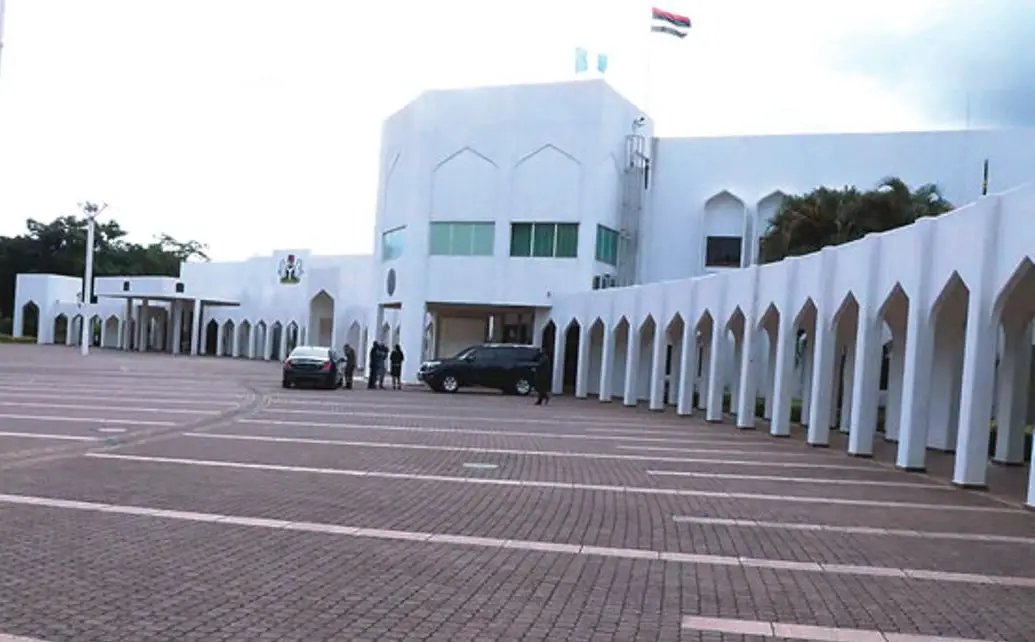While millions of Nigerians face worsening electricity supply, skyrocketing tariffs, and crumbling public infrastructure, on a daily basis across the country, including the nation’s capital- Abuja, President Bola Tinubu rushed and approved N10 billion project to solarise the Presidential Villa in the 2025 budget. Officially named the “Solarisation of the Villa with Solar Mini-Grid”.
Juliet Jacob in this report observes that the initiative has ignited fierce debate, with critics calling it a glaring example of elite self-preservation at the expense of the masses.

The federal government under President Tinubu expectedly has labelled its N10bn solar power project a model for sustainability and energy efficiency. Not surprising, it is in its character to justify its initiative not minding if millions of Nigerians are thrown into darkness consequent to electricity power failure.
But in response, civil society groups, policy analysts, and everyday citizens argue it highlights a government increasingly insulated from the daily hardships faced by many Nigerians.
A Solar Oasis Amidst National Darkness
Budget documents reveal that the N10 billion allocation accounts for the entire increase in the State House’s capital expenditure — rising from N33.55 billion in the proposed budget to N43.55 billion in the approved version. Overall, the State House budget climbed from N47.11 billion to N57.11 billion.
Officials say the goal is to reduce the Villa’s dependence on the fragile national grid, especially following drastic tariff hikes. In 2024, electricity tariffs for Band A consumers surged from N68/kWh to over N209/kWh, while the Villa’s electricity bill ballooned from N344.82 million in 2023 to N483.34 million — partly due to the payment of arrears.
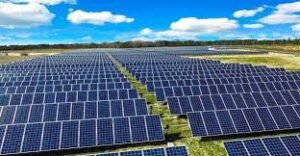
Presidential spokesperson Bayo Onanuga defended the allocation on social media, citing the White House’s partial reliance on solar energy as a “global best practice” and insisting Nigeria was merely “setting an example for sustainable governance.”
Yet, for many Nigerians, the project is seen not as visionary leadership but as an abandonment of the government’s promise to fix the failing energy system.
“Same Tariff, Same Failure, Different Privilege”
Interviews conducted by African Health Report (AHR) reveal widespread public anger.
“Same tariff he increased for Nigerians to pay is the same tariff he is running away from paying. What a hypocrite!” fumed Peter, a resident interviewed in Abuja.
Another citizen, John, lamented the high cost of private solar installations, telling AHR:
“If you come to an area, a lot of people are now spending all their money trying to install solar. I made an inquiry recently, and they told me it would cost nothing less than ₦1.7 million to install a basic system. How many people can afford that?”
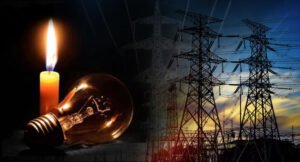
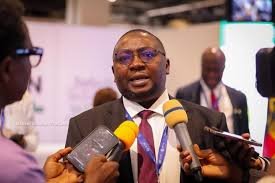
In a more emotional outburst, Mr. Okoh recalled Tinubu’s campaign promise:
“Don’t vote for me if I don’t provide you with 24-hour electricity,” he quoted Tinubu. “Now, he’s budgeting N10 billion for solar at the Villa. Tinubu na real Yahoo Yahoo.”
From Campaign Rhetoric to Grim Reality
During his presidential campaign on October 21, 2022, Tinubu pledged to:
“Generate, transmit, and distribute sufficient, affordable electricity to give our people the requisite power to enlighten their lives, their homes, and their very dreams.”
Yet, in 2024 alone, the national grid collapsed twelve times, with failures recorded on February 4, March 28, April 15, July 6, August 5, October 14, October 15, October 19, October 22, November 5, November 7, and December 11. The grid collapsed again on February 12, 2025, plunging even more Nigerians into darkness.

While the Villa seeks to shield itself from these disruptions, citizens continue to suffer blackouts that stretch into days and weeks, often without any form of relief.
A Healthcare Tragedy: Power Failure Turns Fatal
The consequences of Nigeria’s energy failures are not just economic — they are deadly.
In March 2025, a woman tragically died during surgery at the Jummai Babangida Aliyu General Hospital in Minna, Niger State, after a power outage and a generator failure disrupted her operation. Her husband, UB Shehu, shared the heartbreaking account on Facebook, explaining that 35 minutes into the procedure, the hospital experienced a blackout — and there was no fuel available to power the theatre’s generator.
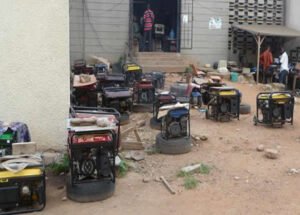
Patients Turn to Generators to Power Machines for Medical Services at the University Teaching Hospital Ibadan, Nigeria, as Public Power Supply Collapses

“Minutes later, they brought fuel, but the Gen refused to start. They had to look for a mechanic,” he wrote. “My wife was still inside the theatre.”
The mechanic eventually had to go to another part of Minna to purchase spare parts. Power was restored more than an hour later, but the operation, initially expected to take 90 minutes, dragged on for hours.
Shehu said he was told by a nurse that the operation might have continued under “an alternative light source — lamp or torchlight.” Despite clinging to hope, the outcome was devastating.
“My intention is not to blame anybody but to raise awareness so lives can be saved in future,” he concluded.
Sadly, this was not an isolated incident. In December 2024, a three-day blackout at Minna General Hospital plunged patients into darkness, causing heartbreaking losses and again highlighting the dangers posed by Nigeria’s unreliable electricity system.
What N10 Billion Could Do Instead
Mr Emeka told AHR that the N10 billion allocated for the Villa’s solar project could alternatively: Power up to 500 rural health clinics with reliable standalone solar systems, Electrify over 1,000 rural schools,
Provide solar mini-grids to more than 100 underserved communities, transforming lives through improved health outcomes, better education, and small business growth.
An analyst emphasized:
“A responsible government would prioritize the needs of the many over the comforts of the few. Imagine the impact if that N10 billion was used for rural electrification instead.”
Strategic Leadership or Elitist Insulation?
Opinions remain sharply divided.
Some energy consultants argue that if implemented transparently and successfully, the Villa’s solarisation could demonstrate the viability of renewable energy solutions and attract more public-private investment in solar energy projects nationwide.
However, many policy analysts are deeply critical, warning that the move signals a government retreat from addressing systemic energy problems.
“The symbolism is wrong,” Mr Jeffery a policy expert told AHR. “It’s an admission that the government has given up on fixing the national grid. It isolates leadership from the daily struggles of Nigerians — and that’s dangerous for democracy.”
A renewable energy advocate, Mr. Ola, said: “If the Villa can demonstrate that solar works at scale, it could inspire wider adoption. However, Nigerians deserve transparency — we need to know the real costs and the projected long-term savings.”
Conclusion: A Tale of Two Countries in one?
As Nigeria’s leaders fortify their enclave against blackouts with a N10 billion solar project, countless citizens are left to battle darkness, disease, and despair. The contrast could not be starker — and for many Nigerians, it raises a painful question:

